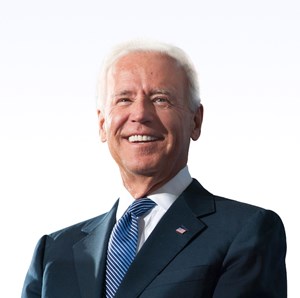Infrastructure Victory Creates New Challenges for Biden
WASHINGTON (AP) — President Joe Biden doesn’t need to look any further back than his time as vice president to grasp the challenges that lie ahead in promoting his new $1 trillion infrastructure deal to the American people and getting the money out the door fast enough that they can feel a real impact.
Biden took a victory lap Saturday after his infrastructure bill cleared the Congress, notching a hard-fought win on a $1.2 trillion piece of legislation that he says will tangibly improve Americans’ lives in the months and years to come.
The Democratic president called it a “a once-in-a-generation investment” to tackle a range of challenges — crumbling roads and bridges, gaps in access to affordable internet, water tainted by lead pipes, homes and cities ill-prepared to cope with increasingly frequent extreme weather conditions.
The legislative win sets up a series of challenges for Biden, both in promoting the new deal and at the same time continuing to push for a long-argued-over $1.85 trillion social safety net and climate bill, which would dramatically expand health, family and climate change programs.
Priorities USA, a Democratic big-money group, warned in a memo this past week that “voters are frustrated, skeptical, and tired — of COVID, of economic hardship, of school closings, of higher prices and stagnant wages, of unaffordable prescription drugs and health care and more.”
“Without results (and effectively communicating those results), voters will punish the party in power,” chairman Guy Cecil said.
While polls broadly suggest Americans support the infrastructure package, some indicate the nation is still not certain what’s in it. About half of adults surveyed in a Pew Research Center poll conducted in September said they favor the infrastructure bill, but a little over a quarter said they weren’t sure about it.
In an effort to correct past messaging mistakes, the White House is planning an aggressive sales campaign for the infrastructure bill, with Biden planning trips across the U.S. to speak about the impacts of the legislation.
He’ll visit a port in Baltimore on Nov. 9 and promises a splashy signing ceremony for the infrastructure bill when legislators are back in town.
The administration is also deploying the heads of the Transportation, Energy, Interior and Commerce departments, as well as the Environmental Protection Agency administrator and top White House aides to speak about the bill on national and local media and African American and Spanish-language press. And they’re putting out explainers across the departments’ digital platforms to help Americans better understand what’s in the bill.
But even as White House officials speak about what’s in the bill, they’ll also have to ensure the money gets spent. It’s a challenge with which Biden is intimately familiar, having overseen the implementation of the 2009 stimulus as vice president. Then, despite promises to prioritize “shovel-ready projects,” challenges with permitting and other issues led to delays, prompting Obama to joke in 2011 that “shovel-ready was not as shovel-ready as we expected.”
Biden, for his part, says Americans could start to see the effects of the infrastructure bill in as little as two to three months. Transportation Secretary Pete Buttigieg said that once Biden signs the measure into law, his department will start doling out the first of about $660 billion in federal money, with some projects just waiting for funding, but others, like investments in new electric vehicle chargers, promoting safer streets for bicyclists and pedestrians and efforts to reconnect communities divided by highways, taking longer. In contrast to the 2009 stimulus, Buttigieg said, Biden’s infrastructure bill is “short term, but it’s long term.”
“This is about many many years ahead, starting now,” he said. “This is how we do right by the next generation.”
Related News
From Archive

- Glenfarne Alaska LNG targets late-2026 construction start for 807-mile pipeline project
- U.S. water reuse boom to fuel $47 billion in infrastructure spending through 2035
- $2.3 billion approved to construct 236-mile Texas-to-Gulf gas pipeline
- Major water pipe break in Puerto Rico hits over 165,000 customers
- Potomac River Tunnel project enters construction phase beneath Washington, D.C.
- Pennsylvania American Water launches interactive map to identify, replace lead water service lines
- Trump's tariffs drive $33 million cost increase for Cincinnati sewer project
- Utah city launches historic $70 million tunnel project using box jacking under active rail line
- Tulsa residents warned after sewer lines damaged by boring work
- Fatal trench collapse halts sewer construction in Massachusetts; two workers hospitalized




Comments